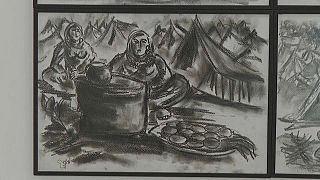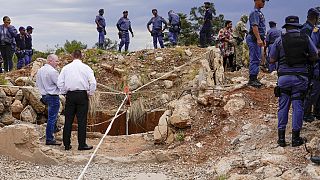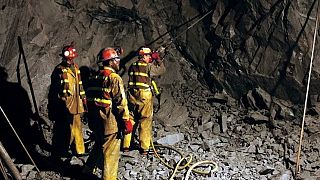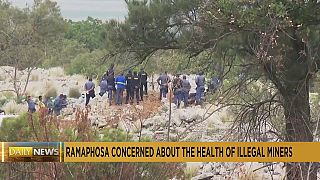South Africa
Mice that were brought by mistake to a remote island near Antarctica 200 years ago are breeding out of control because of climate change, eating seabirds and causing major harm in a special nature reserve with “unique biodiversity.”
Now conservationists are planning a mass extermination using helicopters and hundreds of tons of rodent poison, which needs to be dropped over every part of Marion Island's 115 square miles (297 square kilometres) to ensure success.
If even one pregnant mouse survives, their prolific breeding ability means it may have all been for nothing.
The Mouse-Free Marion project — pest control on a grand scale — is seen as critical for the ecology of the uninhabited South African territory and the wider Southern Ocean. It would be the largest eradication of its kind if it succeeds.
The island is home to globally significant populations of nearly 30 bird species and a rare undisturbed habitat for wandering albatrosses — with their 10-foot wingspan — and many others.
Undisturbed, at least, until stowaway house mice arrived on seal hunter ships in the early 1800s, introducing the island's first mammal predators.
The last few decades have been the most significant for the damage the mice have caused, said Dr. Anton Wolfaardt, the Mouse-Free Marion project manager. He said their numbers have increased hugely, mainly due to rising temperatures from climate change, which has turned a cold, windswept island into a warmer, drier, more hospitable home.
Mice don't need encouragement. They can reproduce from about 60 days old and females can have four or five litters a year, each with seven or eight babies.
Rough estimates indicate there are more than a million mice on Marion Island. They are feeding on invertebrates and, more and more, on seabirds — both chicks in their nests and adults.
A single mouse will feed on a bird several times its size. Conservationists snapped a photo of one perched on the bloodied head of a wandering albatross chick.
Mice eating seabirds has been recorded on only a handful of islands in the world.
The scale and frequency of mice preying on seabirds has risen alarmingly, Wolfaardt said, after the first reports of it in 2003. He said the birds have not developed the defence mechanisms to protect themselves against these unfamiliar predators and often sit there while mice nibble away at them.
Conservationists estimate that if nothing is done, 19 seabird species will disappear from the island in 50 to 100 years, he said.
The eradication project is a single shot at success, with not even a whisker of room for error. Mass pest eradication projects have been undertaken on other islands.
Wolfaardt said four to six helicopters will likely be used to drop up to 550 tons of rodenticide bait across the island. Pilots will be given exact flight lines and Wolfaardt's team will be able to track the drop using GPS mapping.
The bait has been designed to not effect the soil or the island's water sources. It shouldn’t harm the seabirds, who feed out at sea, and won't have negative impacts for the environment, Wolfaardt said. Some animals will be affected at an individual level, but those species will recover.
The eradication project is a partnership between BirdLife South Africa and the national Department of Forestry, Fisheries and the Environment, which designated Marion Island as a special nature reserve with the highest level of environmental protection. It has a weather and research station but is otherwise uninhabited and dedicated to conservation.
The department said the eradication of mice was “essential if the unique biodiversity of the island is to be preserved."
Wolfaardt said the amount of planning needed for the mice extermination attempt means a likely date in 2027. The project also needs to raise around $25 million, some of which has been funded by the South African government, and get final regulatory approvals from authorities.
Scientists have tried to control the mice of Marion in the past.
Mice were already a pest for researchers in the 1940s, so five domestic cats were introduced. By the 1970s, there were around 2,000 feral cats on the island, killing half a million seabirds per year. The cats were eliminated by introducing a feline flu virus and hunting down any survivors, Wolfaardt said.
Islands are critical to conservation efforts, but fragile. The Island Conservation organization says they are “extinction epicentres” and 75% of all species that have gone extinct lived on islands. About 95% of those were bird species.
"We are very confident that eradicating the mice and removing that threat will result in a significant ecological and conservation benefit," Wolfaardt said.











01:48
Mali's former environment minister launches plan to protect forests
01:35
COP29: What do African youth expect from the climate summit?
01:12
COP29 in Baku: High stakes and a $1 trillion question for climate finance
01:37
UN agricultural fund calls for adaptation financing for small-scale farmers
01:27
2024 likely be the hottest year on record for second year in a row
01:19
Spain deploys more troops to assist in search and clean-up operations